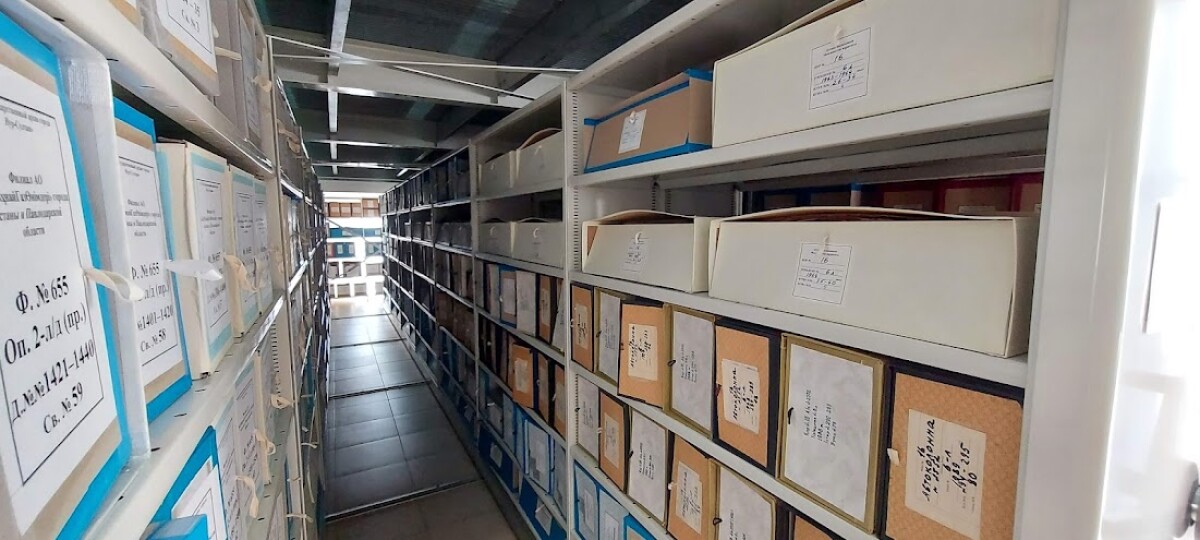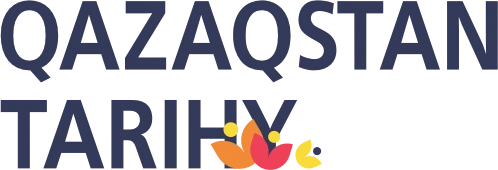
As you know, the archives store more than just archival documents. Most archives also have their own libraries, where researchers can investigate additional literature. The State Archive of Nur-Sultan City went through the exploration of this process.
Meiram Bektembayev, the Director of the State Archives of Nur-Sultan, explained to our portal what is needed to make the archival documents even more accessible to users and discussed the efficient work of researchers.
According to the director, the organizational and legal form of the archival institution in the form of the “SI – state institution” is outdated. The archives should have been transferred to self-sufficiency a long time ago in the form of the SE – “State enterprise” or “NAO-non-profit joint-stock company”, as it was considered as the “Government for the citizens”. This will allow them to offer a wide range of services, earn money, and pay employees the good salaries. The potential of the archive remains great. The institution has already signed the contracts worth more than 70 million tenge in the 1st quarter of 2022. Meiram Bektembaev has boldly rejected the old stereotype that the archive is considered a “Place of creative exile”.
- Hello, Meiram Erkenovich! Please tell us what new ideas you are implementing for young researchers and visitors to the archive.
- Good afternoon, Arman Muratovich! Yes, indeed, our archive is now considering the Archives and Libraries project to create a remote reading room. Based on the Memorandum with the Central Library System of Nur-Sultan, a search is underway for a suitable room with good internet, where the archive plans to create an electronic reading room with a computer and a desktop, using a VPN tunnel that will connect the archive system and the library. The researcher will be able to study in the reading room of the Central Library, both with archival documents and books. It is very comfortable. To date this, no one has implemented this yet.
-You seem to have already implemented services for electronic archives.
Yes, the archive has been providing the "electronic archive" service for a long time, which can be used by various organizations. This service was used by a number of organizations, such as KTZ Express JSC. The archive completely digitized the organization's documentation, brought it into the system, allocated capacity for the organization, and indexed and provided access points. And the original documents of the organization are stored in the repository for depositary storage. If they need the documents, then they can log in remotely via a secure channel.
- What is the modern archive?
- The archives are considered as the repository of data. Nowadays, the best form of information storage is distributed information storage technology, or the blockchain. Domestic information systems are vulnerable because they rely on a single source of information. Any massive attack on any information system can result in data loss, that is impossible in the blockchain.
-What's new in the archive lately?
-The archive is developing. They have introduced training courses in archiving for specialists fr om departmental archives, archivists and anyone who wants to, with the issuance of certificates. On the courses, they learn how to conduct an examination, draw up a nomenclature, carry out coordination, a list of documents, and storage periods. Recently, the graduation of the first students of the courses took place.
- You have installed the new racks, it looks very comfortable and beautiful. How did you manage to update the equipment?
- Due to the modernization of shelving equipment, the archive managed to win up to 30% of the volume of the premises. The old shelving, installed during the construction of the building in the 70s of the last century, is now obsolete. Ergonomics does not allow, the city archive, like any other, has the problem of lack of space. And since the construction of a new building is a long and expensive process, it was decided to upgrade the racking equipment in order to gain more space for document storage.
- What is a DPC?
- A data center has been created in the archive is considered as a data processing center. In fact, this is a repository of electronic documents. At what, not just storage. The documents are constantly used in it, the electronic fund of use to which the reading room will be connected, and services to remote users will also be provided through the data center. All this is already archived.

- I noticed that you have an RFID system in your archive, like in a library. How much does the archive need?
– Radio Frequency Identification (RFID) is used mainly in libraries, but archiving needs it just as much. Firstly, this is to ensure the safety of documents, it is impossible to remove a document fr om the storage without making a mark in the database information system. Secondly, thanks to these labels, it is known wh ere which document is located in the repository. In order to find out wh ere the document is located, you need to log in to the system. Having indicated the necessary document, fund, inventory, the system will show in which rack, on which shelf it is located. Therefore, the implementation of this system is essential.
- How did you manage to replace outdated firefighting equipment?
- In 2021, the akimat went towards the archive and allocated funds for the modernization of the fire extinguishing system. A new automatic gas and aerosol fire extinguishing system was installed in the archive, tests were carried out, everything works fine. The fire extinguishing system uses special gas equipment that extinguishes fire sources, does not harm documents, and is also harmless to human health. The use of aerosol formulations is prohibited in archives, as they can harm documents. Sprinkler or water extinguishing systems can also destroy valuable documents, which, when exposed to water, swell and decompose. Such documents are no longer recoverable. Therefore, gas compositions that can quickly localize a fire in the archive room are optimally suited for the archive.
-The pride of the archive is the unique restoration equipment. How do you use it in practice?
- The archive's unique project is the restoration laboratories, which have no analogues in Kazakhstan. Advanced equipment is used. To date, 207 storage units have been restored, with a volume of 8,493 sheets of archival documents. Each document is handled gently and with care. First of all, they embroider the document, then straighten and fill in the holes left by the hole punch. And if part of the document is torn off, then extensions are made on a special table with illumination – they are glued with special Japanese paper. The paper is dyed or tinted to match the color of the document. If the document is badly damaged, then experts make the so-called "topping up". To do this, there is a special blender with which paper pulp is made. Specialist-restorers themselves make methylcellulose glue. The restored document is double-sided laminated on special Japanese paper. The uniqueness of the lamination procedure lies in the fact that, if necessary, with the help of a steam pencil, this paper can be removed and the document returned to its original state. For the restoration of large-format documents, a leaf-topping machine is used, the only one in Kazakhstan. There is special equipment—an incubator and an autoclave—which are waiting for their specialist chemist-biologist.
- How is the staffing?
- Staffing is a problem. First, it has a high staff turnover. It is worth recognizing that today, young people do not have a great desire to work in archives. Why? The social status of a civil servant, which includes an archive worker, is not up to par. Low wages, small social benefits. According to these indicators, archive workers receive much less than the average monthly salaries announced by the National Bureau of Statistics. But the archive is trying to solve this important issue on its own, in particular, through the introduction of paid services. Archive employees receive various allowances and bonuses for the holidays. In Kazakhstan, work on the preparation of archival workers has not been established. The training of specialists-archivists is carried out only in one university-KazNU named after al-Farabi, and a number of secondary specialized educational institutions. In addition, the current situation must be taken into account. As an archivist, this is a very narrow area of expertise. In principle, in order to ensure the necessary storage of documents, special knowledge and skills are not required. But the archives have a very large layer of work with acquisition sources. And they are going in very different directions. These are both public and private organizations, in such fields of activity as medicine, agriculture, education, science, industry, taxes, etc. Accordingly, without knowledge in this field, the archivist will not be able to conduct a full examination of documents. It is necessary to introduce such an approach in which, when working with documents and archives of financial organizations, a specialist should have a specialized financial education; if with technical documentation, then an engineering education. Computer technologies are being actively introduced, but how can an archivist work with them without knowledge of the IT field and without being familiar with cybersecurity programs? Here you need a high-level "IT specialist" who will not only be able to provide the necessary information, but also be able to protect it. It is necessary to revise approaches to the competence of a specialist and raise the social status of an archival worker. There are not many enthusiasts for archival work. On enthusiasm alone, a person will not last long.
- What are your plans for this year?
- The main task for 2022 is to continue the digitization of archive documents. To date, about 5 million documents have been digitized, but this is not enough. Only 10% of the archive fund has been digitized. Also, there are plans to actively introduce training courses. The representatives of other archives turn to the capital archive for the experience, to look around, get acquainted with the equipment, and to study. In the future, special courses on the restoration of documents will be organized for the state archives. In Kazakhstan, there is a practice of sending archive employees to study abroad. Such courses need to be developed locally. We will increase the fund of use. As we mentioned above, a remote reading room will be introduced, and the direction of providing paid services to the population and organizations will be expanded.
- Well, we wish you success in your important and necessary work!
-Thanks a lot!
translator Aliya Kulmagambetova

